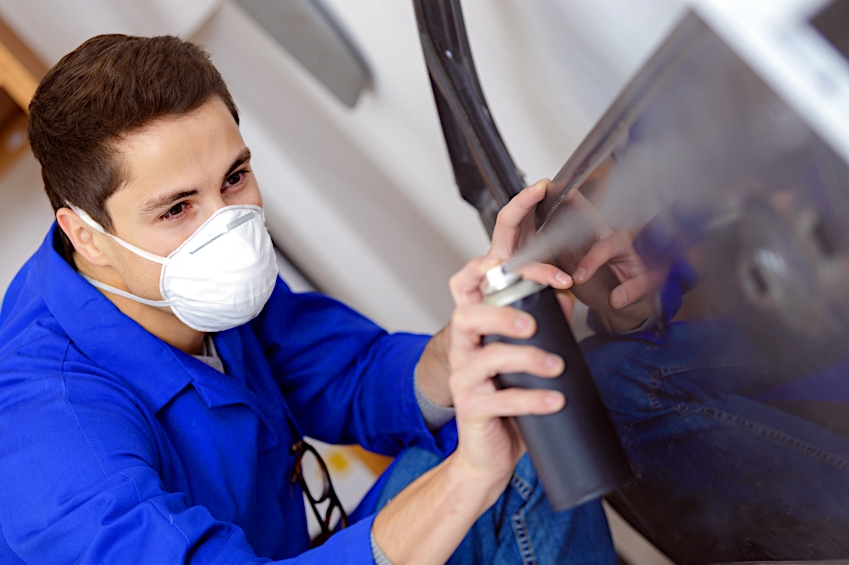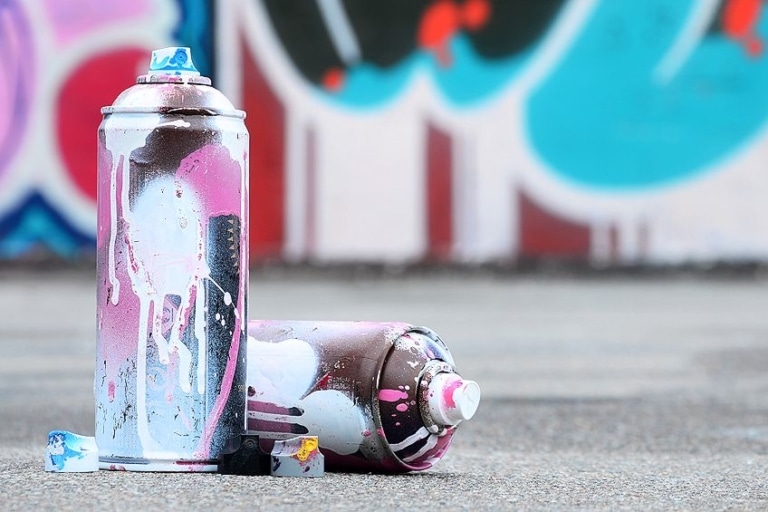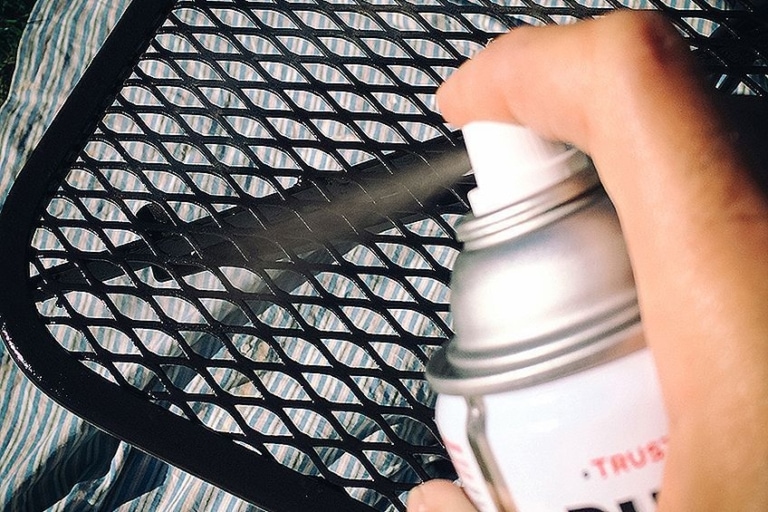Best Spray Paint for Cars – Our Automotive Spray Can Paint Guide
Disclosure: There are some affiliate links below and I may receive commissions for purchases made through links in this post, at now additional cost for you.
You may look at your car and wonder how it went from a shiny new car to one which is now scratched-up and faded, but you are not alone! Life can seem overwhelming, and as a driver we spend more time inside our vehicle as opposed to standing outside of it, looking at it. Though it can be a bit disheartening seeing your car looking tired and run-down, you may want to apply a fresh coat of paint. There are a host of benefits to respraying your car. This article will outline the benefits and advise you on how best to go about respraying your car.
Why Should You Respray Your Car?
The concept of respraying your car can seem overwhelming, but it doesn’t have to be. With a bit of patience, the correct preparation, and the right tools you should be able to do it in a weekend. You may be wondering, however, why it would be necessary to respray your car.
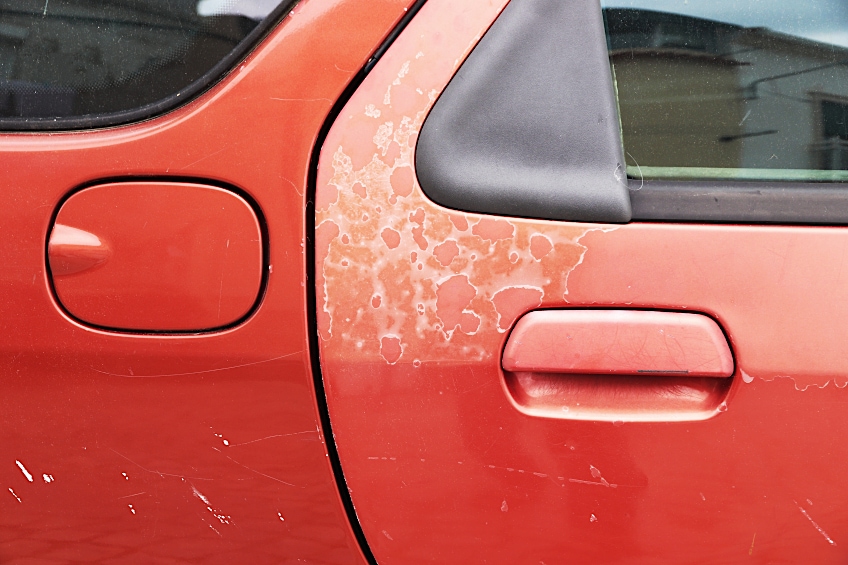
Tailored Aesthetic and Cost
Previously if you were looking to respray your car, or even have it detailed, you would need to pay a lot of money, and so spray-painting cars using aerosol paint was left to broke teenagers with no money, but too much time on their hands.
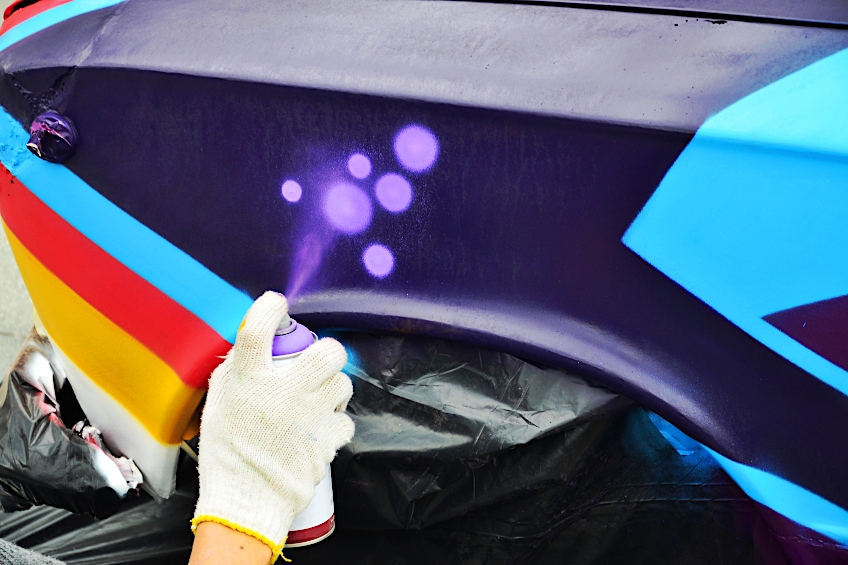
Things are a lot different now, there is still the option to have a professional respray on your car, but there have been significant improvements when it comes to using aerosol spray paints to recondition your car all by yourself.
One of the perks to respraying your car yourself is that it allows you the opportunity to try spray painting (which is a lot of fun). If you do it right, it also will save you a significant amount of money, and you’ll be able to select the consistency and the exact color that you want.

Protection From Moisture
By respraying your car, you are also providing basic repairs and maintenance, which is particularly important if you live in a humid area, if you live close to saltwater, or your car is parked outside a lot.
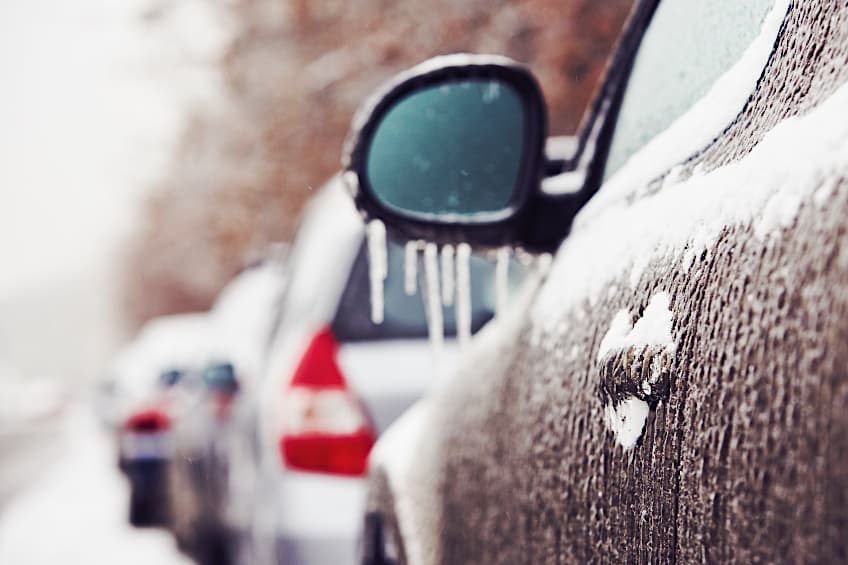
Why is this, you may wonder? Well, saltwater and moisture vapor can cause the paint coat and clear coat over time to degrade and oxidize. This results in your car’s bare metal being exposed to the atmosphere which will cause rust to form.
It is quite easy to treat and remove surface rust, but it is also absolutely essential: if you don’t attend to rust, it can spread deeper into the car’s chassis and panels, causing significant structural damage, and making your vehicle unsafe to drive.

Protection From Heat
Moisture damage is not your only concern when you are thinking about respraying your car though, excessive heat exposure can result in your car’s paint fading, bubbling over time, and degrading. It can also result in your vehicle being vulnerable to heat management issues and oxidization.

Paint on your car is not just there to make the vehicle look aesthetically pleasing. Paint provides your car protection from warpage, heat, and moisture which can impact your car’s electronics and other components.
Resale and/or Trade-In Value
Lastly, the main reason the majority of car enthusiasts respray their vehicles is to increase or maintain the trade or resale value. Keep in mind it is not only the condition of the vehicle’s transmission, engine, and suspension that is taken into account when trading or selling your vehicle for a new one.
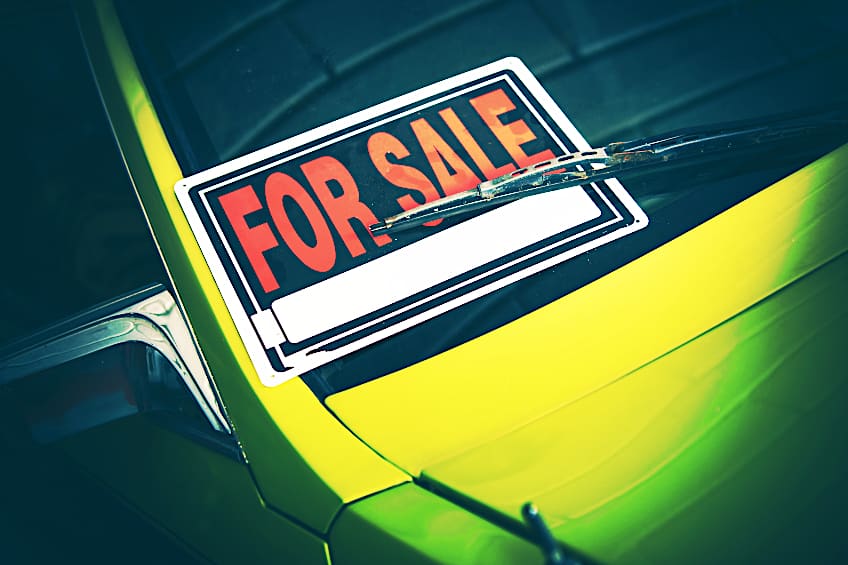
Your car’s aesthetic appeal has a significant impact on its re-sale value, which makes sense, as the majority of us would select a car that looks good as opposed to a car that may require a good spray job. Damaged and faded paint is often a good indicator that things are less than perfect under the bonnet as well.

What Type of Spray Paint Works on Cars?
Knowing which is the correct paint to use on your car is half the problem, and having too many options can be overwhelming. If you are uncertain of which type of paint to apply to your vehicle, we have put together a list to assist you. Keep in mind that each painting has its own positive and negative aspects, therefore the best one to use is always the one that will meet your needs best.
Water-Based Automotive Paint
While over the last few years, water-based paints have grown in popularity, they are unfortunately not the most effective paints to use when spraying a vehicle. You may wonder why water-based paints used to spray paint your car is not like the kinds you will find in your local hardware. These water-based automotive paints are specifically designed to be durable and hard-wearing. You need to be certain that they have been mixed correctly before you use them, otherwise, they will not adhere properly.

In addition, when you apply water-based paint to automotive-grade aluminum or steel, you will have to use a primer and a lacquer that stops the paint from degrading and ensure it adheres sufficiently. Compared to what they once were, water-based paints have come quite a way, but aerosol water-based paints for cars still need some work. It is due to this that they are not normally used by DIY enthusiasts, and professionals.
Nitro-Cellulose Automotive Paint
Are you the lucky owner of a classic car? Perhaps you possess a vintage American muscle car, or you have a classic old Porsche sitting in your garage.
Are you just longing to restore it to its former glory? If this sounds familiar, you are then one of the millions who are looking to achieve the same thing, and one of the best approaches to restore your vehicle is nitro-cellulose automotive paint.
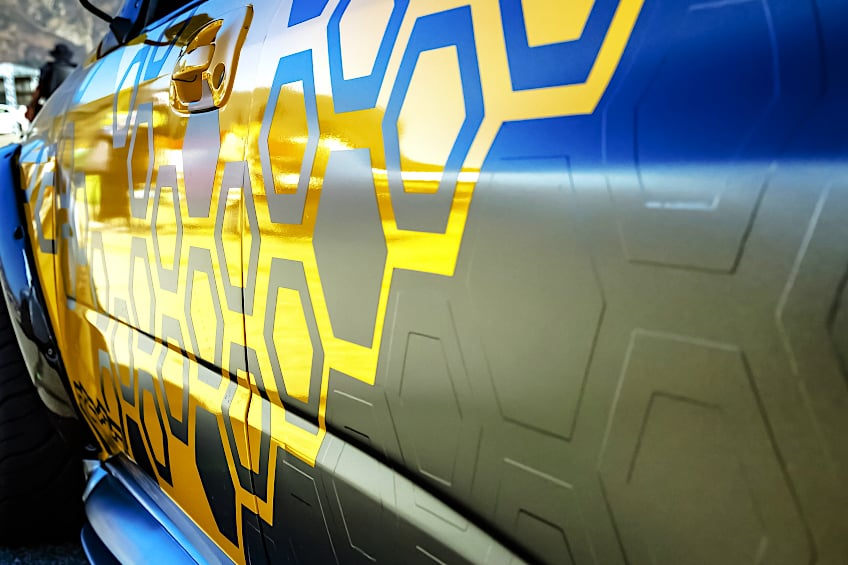
You may wonder what this is it is a type of paint that is the most effective option to completely re-surface any type of vehicle, while also touching up and restoring the car. What makes this paint so unique is that a creates a sheen to the vehicle as if it was new, “from the factory”.
Nitro-cellulose paint is an amazing tool, but is very toxic and you have to ensure you are wearing a full-body protective suit when applying it. This form of paint can be purchased in an aerosol form, but that will not be sufficient quantity required to spray an entire car. The spray paints you can purchase are meant to be used for musical instruments, so they in all likelihood will not look great if used on a car.

Acrylic Enamel Automotive Paint
Automotive paint spraying can be a little overwhelming, but some types of paint are available in an aerosol can form that will work on cars. That being said, one needs to mention automotive paint spraying without also mentioning acrylic enamel paint.
You may be a veteran when it comes to DIY paint spraying, or you could just be a teenager with your first car, either way in all likelihood you will at some point end up with a can of spray paint in hand. Why you may wonder, the aerosol can-based spray is the most popular type of paint in the automotive industry and one of the most affordable!
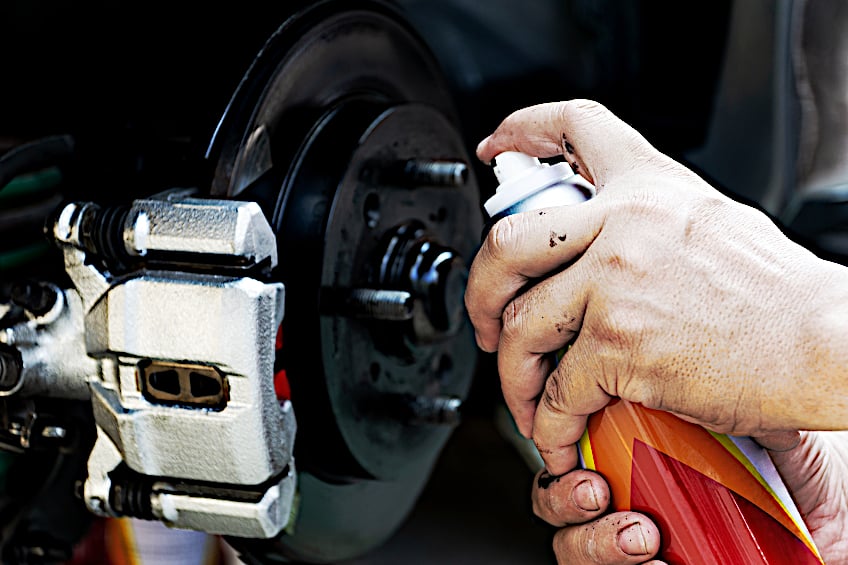
When applied correctly, this form of paint creates a strong bond with the surface of your item and will last anywhere between five and ten years, or even longer than other spray paints in the same price range. Heat-treated acrylic enamel paint cures extremely hard making it very durable.
Many automotive engineers apply acrylic enamel spray paint directly onto engine blocks. This is due to enamel and heat being linked, with enamel particles soaking up and redistributing heat better than the majority of other materials available.

Acrylic Urethane Automotive Paint
If you are thinking of investing a lot of money in your paint job and you have the time to tackle the task yourself, we recommend using acrylic urethane paint. While it is one of the costliest types of automotive paint available in the market, the durability and quality it provides make it a premium choice when purchasing an aerosol spray paint to use to restore your vehicle.

Keep in mind that acrylic urethane paints can be challenging to work with as you will need to add components to them to create the correct viscosity for your paint job. If you are eager to take on the challenge and have done the required preparation for your workpiece for this type of paint you will be rewarded with aesthetically pleasing results and a long-lasting finish.
To be honest the majority of urethane paint finishes outlast any other type of paint finish. It will hardly ever chip, is resistant to impact and abrasion. Any dents or scratches will buff out with ease.
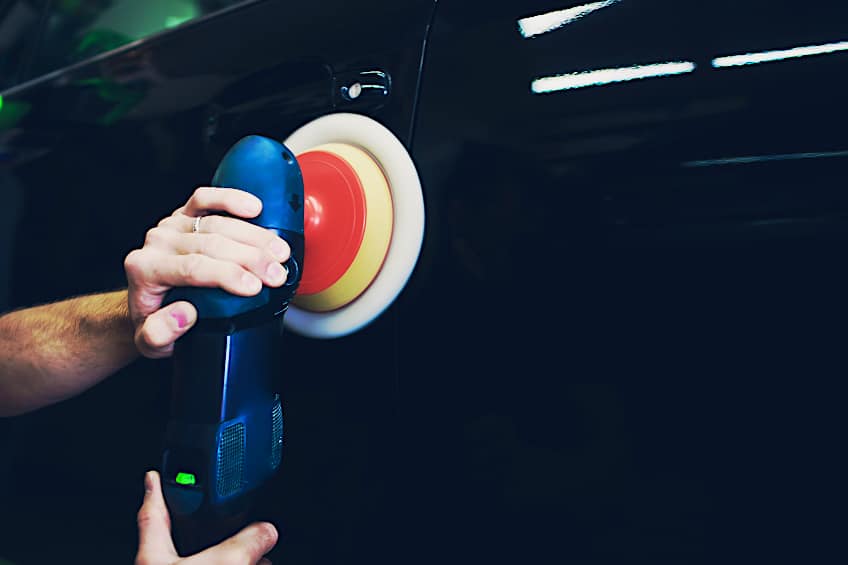
Lastly, the great benefit of this type of paint is that you do not have to apply a clear coat, thanks to acrylic urethane paint are an inherently glossy wand that will give your vehicle a stunning sheen finish once you have applied it.
| Type of Paint | Water-Based | Nitro-Cellulose | Acrylic-Enamel | Acrylic Automotive |
| Available in Aerosol Can Form | ✔ | ✘ | ✔ | ✘ |
| Water-/Moisture-Resistant | ✔ | ✔ | ✔ | ✔ |
| Impact-Resistant | ✘ | ✔ | ✔ | ✔ |
| Gloss/Sheen Finish | ✔ | ✔ | ✔ | ✔ |
What Is the Best Spray Paint for Cars?
Now that you have an understanding of which types of spray paint are graded to be used on cars, we can look at certain brands that we recommend as the best spray paint for cars. At the end of the day, paint choice is subjective, and when choosing your paint, you should to into consideration the elements your car will be exposed to. We have put together a list of three paints that we feel will do the job.
Best Overall: POR-15 Gloss Black Topcoat Spray Paint
There are only limited options in the automotive aerosol spray paint market as the majority of people prefer to spray their bikes and cars using a paint sprayer. This has resulted in great competition between the brands that sell such products, and this is apparent with the POR-15 brand.
With limited brands on the market, you need to remain competitive or risk the chance of being muscled out of that given market. The team at POR-15 has done an excellent job of keeping the top spot so far.
This is the best automotive spray paint in a can available, that protects the surface of the vehicle while doing the job aesthetically. What is unique about this product is can be used to touch up areas of damage or you can apply it straight to the raw metal for your vehicle’s first coat of paint ever.
PRO-15 claim that their products will provide you protection from oxidation and that the product can be applied straight to the metal of your vehicle without having to use any form of clear coat or primer, which will save you a considerable amount of time in preparation.
The self-priming, UV-resistant formula, is also water-resistant and abrasion-resistant, making it the perfect product. It is however an expensive product, and the formula is sadly only available in limited volumes, you may end up buying several cans if you plan to spray all your panels.
Despite the high cost, you get what you pay for, this is undoubtedly the best automotive spray can paint available on the market.
- Direct-to-metal aerosol paint creates a permanent corrosion barrier
- Protective moisture-shedding formula with long-term color retention
- Direct to metal or previously painted surfaces, no primer required
- Simple to use
- Durable finish
- Versatile
- Stops oxidation
- Self-priming formula
- UV-resistant
- Insulates surface from electricity and heat
- Pricey
- Can only be purchased in one color
- Only available in one volume
- Takes longer than 24 hours to completely cure
Best Finish: DUPLI-COLOR Trim and Bumper Spray Paint-Black
Thanks to the evolution in technology, we have moved away from using certain materials. Keeping this in mind a large number of cars are being made of composite materials, space-aged materials, and monocoque chassis materials.
Understandably, paints that have historically been used on cars that were built like tanks are being used less and less, and paints that are more conducive to materials are more favored today. The bumper spray from Dupli-Color is a great example, as they provide an assortment of sprays for your car’s impact zones.
The rims and bumpers of your vehicle are some of the most frequently damaged parts of any car. This is of course unsurprising, due to them being the lowest point of any vehicle, and therefore the first part of the car to come into contact with any debris thrown up from the road.
While the purpose of a bumper is to protect the car from minor everyday impacts, in doing so it will invariably receive bumps and scratches, and the end result does look terrible. As the majority of bumpers are no longer made from chromed metal, you will require a plastic spray. Dupli-Color bumper spray can be used to repair your bumper or spot treat it.
The product has been formulated to dry in just 30 minutes and completely cure in one hour. So, you won’t be stuck waiting for your bumper to dry all day. The can comes equipped with an EZ spray nozzle that ensures you require almost no pressure to release the spray.
This in conjunction with an even spray orifice means that every time you press the button, you will achieve ideal spray distribution onto your work surface. Keep in mind that this is a highly flammable product, so ensure you do not use it inside the engine bay of your car, or around an open flame.
- Renews and protects thermoplastics and polyurethane bumpers
- Solid uniform color with superior paint adhesion
- Touch-dry in 30 minutes, can be handled in 1 hour
- EZ spray technology
- Versatile
- Simple to use
- Quick curing time
- Even spray nozzle
- Quick drying time
- Scratch-resistant
- Impact-resistant
- Cannot be used for color matching or spot repair
- Very flammable
- Only available in limited quantities
- Only available in three colors
- Can only be applied to plastic
Best Value: PERFORMIX Plasti-Dip Black Multi-Purpose Rubber Coating
We have looked at paints that are specialized for certain surfaces like plastic and metal. However, you may find yourself requiring a universal tool, that can be used on an assortment of surface materials. Performix has created the ideal product for all your automotive spray paint requirements.
Plasti-dip solutions have become increasingly popular over the years thanks to their ability to provide insulation and protection to several vehicle surfaces. It can even be applied over an existing paint job such as a vinyl wrap and you can remove it at a future stage.
The layer will protect the surface of your vehicle from UV damage, moisture, excessive heat, and unexpected electrical damage.
This product from Plasti-dip is available in matt black which is the ideal color for fixing bumpers, interior plastics, or whole panels on your vehicles. You can use a brush to apply this paint, or you can apply it using an aerosol can.
This product is very flexible if applied in excess, which is a wonderful characteristic if you are looking to create an extra soft surface or if you are hoping to create cushioning on your workpiece. the product can cause quite a mess when applying it, so be sure to cover up any surfaces you wish to protect from the paint. The product will provide you with a stunning finish that you can remove at any time, whilst also offering your vehicle protection.
- Protects against moisture, corrosion, electrical shock, and vibration
- Flexible, non-slip, controlled grip that will not crack or become brittle
- Can be removed to reveal original surface without causing damage
- Versatile
- It can be as brittle, flexible, or rigid as required
- Simple to use
- Assortment of options for application
- Removable layer
- Offers protection against UV damage
- Protects against abrasion and impact
- Insulates surfaces from electricity and heat
- Needs replacement after three years
- Can only be purchased in one color
- Can only be purchased in 11-ounce volumes
- Non-ergonomic grip
What to Consider When Buying a Spray Paint
There are a few things you will need to take into consideration when spray painting your car. There are so many brands and choices that all claim to be the best car spray paint, but they may not provide you with what you are looking for.
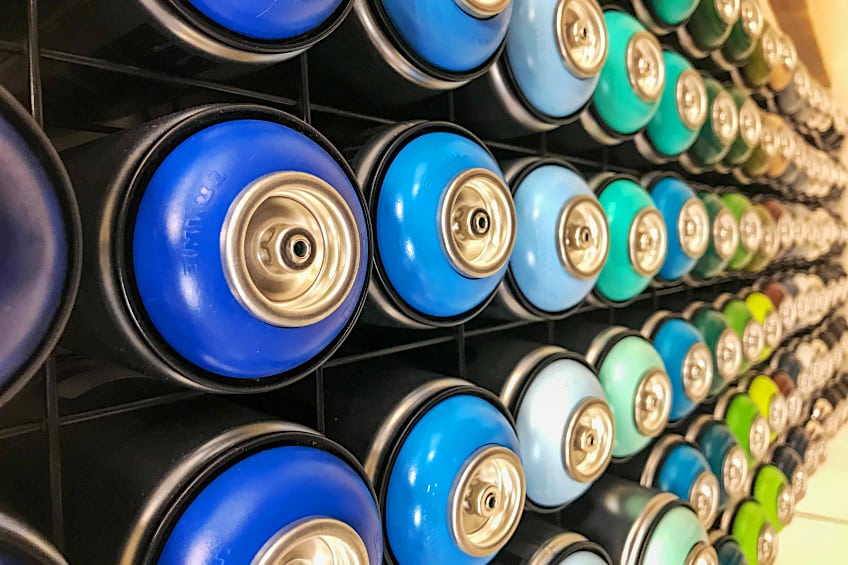
Finish
The finish provided by paint is one of the most important characteristics to take into consideration when selecting your paint. The majority of finishes available in aerosol automotive spray paint are either matt, gloss, or somewhere in between.

A color flipping paint or light-sensitive tint is quite rare to find when purchasing an aerosol spray paint, but they do exist. Just remember that they are few and far between and will be quite expensive.
Quality
The quality of protection a paint provides is very important to consider when choosing spray paint. Good quality paint provides great adhesion and resistance to damaged caused by moisture, impact, excessive exposure to heat, or abrasion.

It is important to note that paint quality can vary significantly from brand to brand. We, therefore, recommend that you consult product reviews and tutorials to ensure that you are purchasing a great quality product.
Be careful of newer brands that make claims that they offer a spray paint that works on any surface, or is the best car spray paint, as they could be using inferior base materials in their products or are just trying to scam you.
Versatility
When painting surfaces versatility is seen as a good thing. A paint that can successfully be applied to multiple surfaces will save you money and time, whilst also saving you effort in an exercise that can be particularly labor-intensive, particularly if you need to apply the paint to a larger workpiece.

In this article, we have already covered some multi-purpose paints that are great examples of what a versatile automotive paint should work like. Keep in mind that not all brands will offer you the same level of adhesion quality across all the surfaces as they claim, or the same level of finish. It is for this reason that the majority of professionals favor using dedicated automotive paint. There is a high risk when using universal paint and it can be a pricey mistake to correct.
Price
At the end of the day, your choice may come down to price. Even if you have access to the best automotive spray paint in the world, it is irrelevant if you cannot afford it. high-cost paints more often than not work out to be worth the cost, but the expense may not always be justifiable.
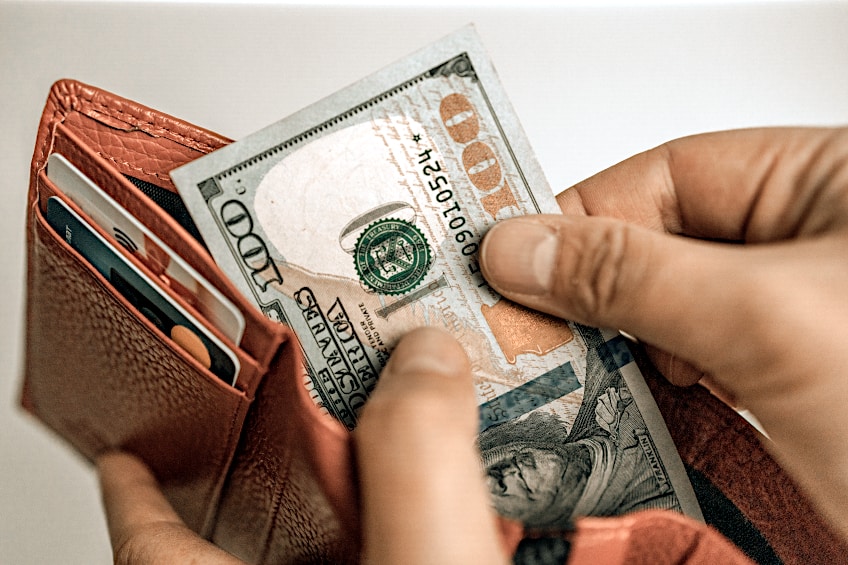
If you are just touching up a spot, or simply respraying a portion of interior plastic, you might choose to use something a little cheaper as these areas on your car are not considered the focal points of the car. There are, however, certain products that are over overpriced for the versatility, quality, and overall finish they provide. We recommend you shop around and compare prices, particularly if you are working in a certain price range.
How to Spray Paint Your Car With Automotive Spray Can Paint
You might be feeling nervous to begin painting, but there is no need to be. It is quite easy to do and a lot of fun to do touch-ups on your vehicle using spray paint. You will need to prepare your workspace, yourself, and the item you will be working on, correctly. We have put together a few steps to assist you with the process.
Prepare Your Surface
You will need to prepare the surface you will be spray painting, this is the most important step when spraying your car’s surface. Surface preparation will ensure that the finish adheres to the surface. It will also ensure that any spots you are looking to blend will not stand out when the fresh paint has completely dried. Begin by sanding away any existing paint (if there is any left) using some fine-grit sandpaper. To achieve ideal results, the sandpaper should be between 600 to 1500 grit.

You want to sand down the existing paint so that you get down to the bare metal. However, take care to not scratch the metal too much. We suggest that if you are inexperienced that you do not use a power sander to do this.
When you have finished sanding the surface down, ensure that the spot that you will be applying the spray paint to is clear of any debris. You will also need to fill in any holes in the panel using body filler. The filler will need to be allowed time to dry, consult the manufacturer’s instructions to determine the desired drying time. Once dried sand down the filler to ensure that it is completely flush before you can continue to the next step.
Isolate and Prime Your Work Area
Once you have finished filling any holes on your work surface and sanding down any existing surface paint, you can begin to mark and isolate the area you will be spraying. You can use some painter’s tape and paper to tape off the necessary areas. Isolate the areas by using painter’s tape to adhere the paper. This will ensure that you only paint the areas you wish to paint.
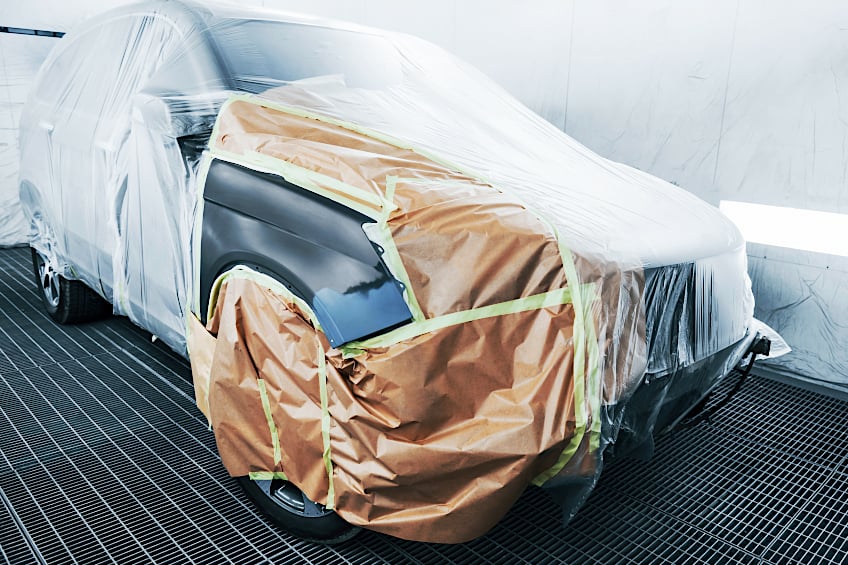
You must isolate the area you need to paint. You do not want to be stuck having to remove paint from areas of your car that are perfectly fine. When you have finished securing the areas you need to work on, take a clean cloth and wipe off the area before priming your workpiece. If you are using self-priming paint then you will not have to apply any primer. If, however, your paint is not self-priming, when applying the primer, you will need to ensure you are working in a well-ventilated space.
You ideally want to apply three layers of primer. You can if you wish, sand down each layer between applying the next one, but this is completely up to you. The primer needs to be allowed sufficient time to dry between applying each layer. It is also important when working with primer that you are wearing the necessary protective gear such as gloves and a mask.
Spray Your Surface
When you have finished priming the surface and it has completely dried, you can then use some soapy water to wipe it down before you start applying the spray paint. Allow the surface to completely dry before applying the spray paint, this will give you ample time to get your spray paint ready. You will need to shake the can of spray paint and then allow it to settle for a minute before you begin spraying.
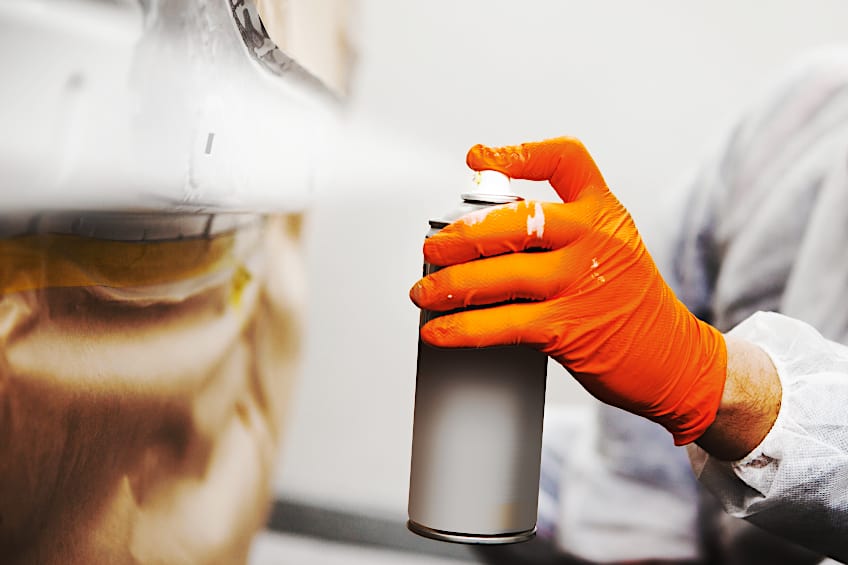
When applying the spray, you want to ensure you are maintaining a good spraying distance. If you hold the can too close to the surface the paint could potentially pool, bubble, and run. Begin by applying minimal pressure to the spray button. Spray from one side to the other, using your wrist, in an uninterrupted, smooth motion. In doing so you will achieve a uniform application.
Once you feel confident when working with the spray paint, and you have adequately covered the work area, you will need to allow sufficient time for the paint to dry. Apply as many coats as you feel you need; we recommend three coats to be a good number when dealing with most panels. When your final coat has completely dried, you can then apply a clear layer graded for automotive surfaces and you will be left with a surface that looks as good as new.
Now you know you can spray paint your car without the assistance of a professional. In this article, you have been provided with a list of the pros and cons of different types of automotive aerosol spray paints, and which spray paint for cars that are available on the market, is the best to use. We have hopefully equipped you with the knowledge of what to look for in spray paint, and how to effectively use aerosol paint on your vehicle. It is now time for you to take your newfound knowledge and tackle spray painting your car. Remember that when working with spray paint, you will need to ensure you are working in a well-ventilated space and that you are wearing the correct protective gear.
Frequently Asked Questions
How Do You Spray Paint Evenly?
A simple trick to use when spraying any type of surface is to apply the paint by spraying in serval thin coats. Rather than applying three medium-density coats, try applying five or six thin coats of paint to achieve a more even finish and avoid drips.
How Do I Get a Smooth Finish With Spray Paint?
Spray paint can be difficult to work with, particularly if you have not worked with spray paint before. To achieve a stunning smooth finish, the majority of professionals recommend lightly sanding each new coat of paint, before applying the next coat.
At What Temperature Do Aerosol Cans Explode?
On average, spray cans tend to explode at 120 degrees Fahrenheit (48,8 degrees Celsius), but this is all dependent on the contents of the spray can. Certain accelerants might expand faster than this. We recommend that you keep your aerosol cans, regardless of their contents, away from exposed flames and well out of direct sunlight.
